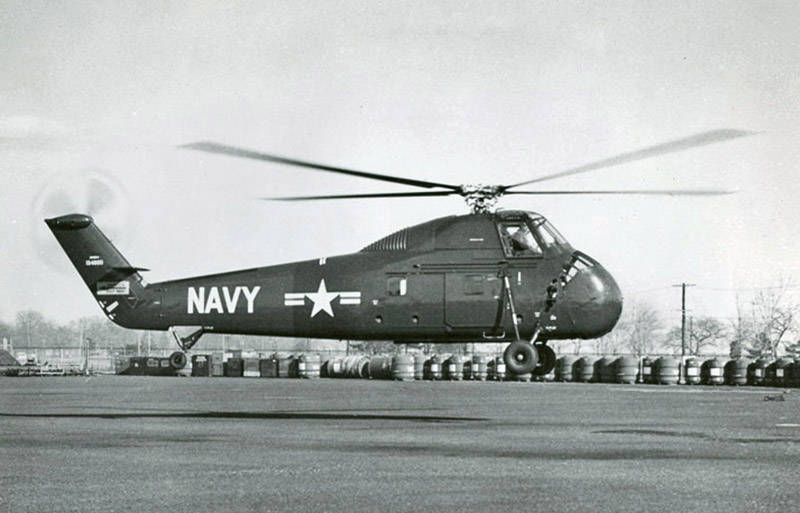Sikorsky Product History
Sikorsky S-58
Background
Early development of the Sikorsky S-58 (H-34) helicopter was accomplished with company funds as a follow on for the S-55 (H-19) helicopter. It was twice as powerful as the S-55 and much more aerodynamic. It was marketed to the Navy and Marine Corps but the Navy chose the Bell HSL-1 helicopter and the Marines the S-56 (H-37) helicopter. Problems with both these programs led both customers back to Sikorsky to purchase over 1,000 S-58 helicopters in two configurations. The Navy Anti-Submarine Warfare (ASW) version SH-34J (HSS-1 and HSS-1N) was contracted for in June 1952. First flight was on March 8, 1954. A US Army order for the H-34A followed in 1955. Marines purchased a Utility version UH-34D (HUS-1) in 1957. During the following years, customers like the US Air Force, US Coast Guard, foreign militaries, and licensed production in France, Great Britain and Italy over 25 years swelled the number of S-58 Helicopters built to over 2,300 units. These aircraft went by many different models and nicknames.
Sikorsky S-58 Models and Nicknames by Customer
Customer | Model No. | Old Model No (Prior to 1962) | Nickname | Mission |
|---|---|---|---|---|
U.S. Marine Corps | UH-34D | HUS-1 | Seahorse | Utility Transport |
U.S. Marine Corps | VH-34D | HUS-1Z | Seahorse | Executive Flight Det. VX-1 |
U.S. Marine Corps | UH-34E | HUS-1A | Seahorse | UH-34D with Flotation Gear |
U.S. Navy | SH-34G | HSS-1 | Seabat | Anti-Submarine Warfare (ASW) |
U.S. Navy | SH-34J | HSS-1N | Seabat | ASW Night Capable with Auto-Hover |
U.S. Navy | LH-34D | HUS-1L | Seabat | Winterized for Antarctica |
U.S. Navy | YSH-34J | HSS-1F | Seabat | Tested for T-58 Conversion |
U.S. Navy | UH-34J | HSS-1 | Seabat | Utility Transport, ASW Gear Removed |
U.S. Navy | VH-34J | Seabat | VIP Conversion of SH-34J | |
U.S. Army | CH-34A | H-34A | Choctaw | Troop Transport |
U.S. Army | VH-34C | Choctaw | VIP Transport | |
U.S. Army | CH-34C | H-34B | Choctaw | Modified CH-34A Model |
U.S. Air Force | HH-34J | Seahorse | Search and Rescue, Modified Navy SH-34J | |
U.S. Coast Guard | HH-34F | Seahorse | Search and Rescue | |
Commercial | S-58A | Cargo Transport | ||
Commercial | S-58C | Airline Passenger Transport | ||
Commercial | S-58D | Airline Passenger & Freight Transport | ||
Commercial | S-58T | PT-6 Twin-Pac® Turbine Conversion |
Configuration Features
The S-58 features a 56 foot 4 bladed main rotor and a 4 bladed tail rotor. Both main and tail rotor blades use the symmetrical NACA 0012 airfoil. The S-58 has a wind tunnel developed aerodynamic fuselage and a 4 bladed main rotor. Sikorsky chose a 4-blade rotor for the S-58 because it produced a lower blade loading compared to the 3-blade S-55 rotor and therefore would be able to fly faster before encountering blade stall. Another reason for the four blades was to reduce aircraft vibrations.
The S-58 (H-34) set a speed record of 141.9 mph on a 100 Kilometer closed course on July 12, 1956. Clam shell doors on the engine compartment allowed easy access for servicing as well as expediting engine changes. The all-metal fuselage utilized magnesium skins in certain areas as a weight saving measure. Corrosion and the fire hazard experienced with certain S-58 models discouraged further use of magnesium for airframe components by Sikorsky on subsequent models.
The conventional landing gear (main wheels in front, tail wheel in back) enhanced ground handling by greatly reducing the turning radius of the helicopter. The rear tail wheel also improved safety by making the tail wheel the first thing to hit the ground in a quick stop landing rather than the tail rotor blades. A manually folded main rotor and a folding pylon were provided to allow the helicopter to fit on aircraft carrier elevators.
General Arrangement Drawing
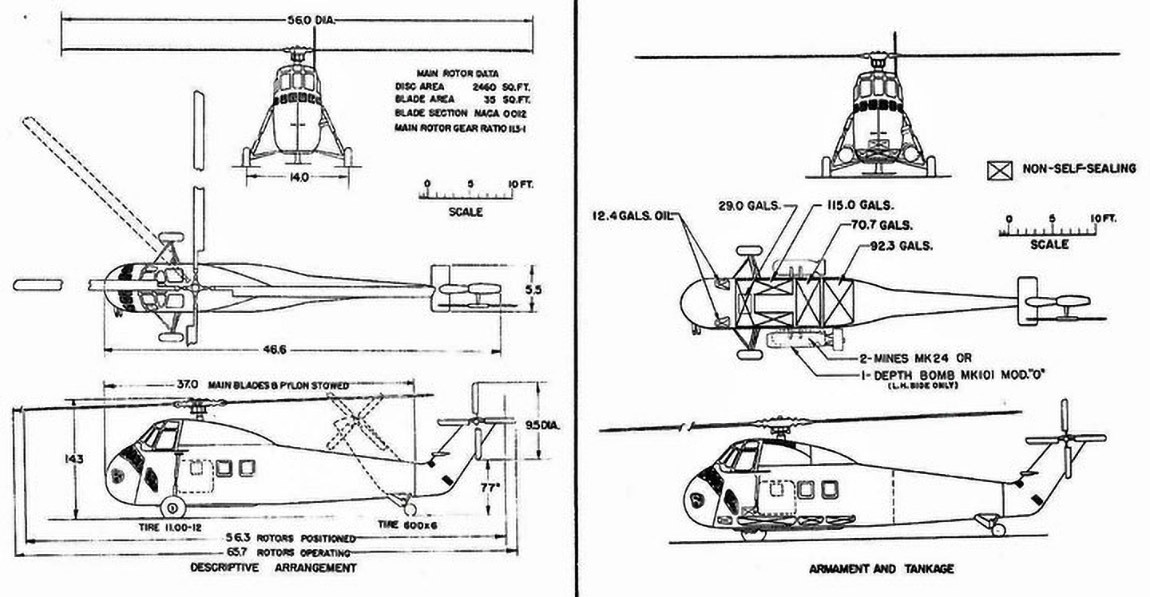
Mission Systems
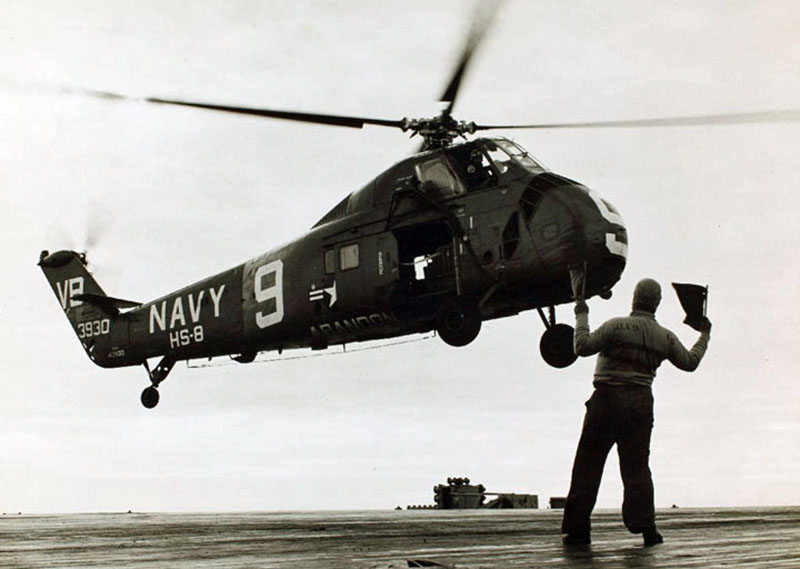
The Navy SH-34J had dipping Doppler navigator, an AN/AQS-4/-5 dipping SONAR, and Automatic Stabilization Equipment (ASE), a helicopter autopilot system, which allowed the helicopter to achieve a hover and maintain position over the SONAR transducer without pilot assistance. The ASE equipment was a giant step forward for Anti-Submarine Warfare allowing missions at night and in low visibility conditions. Weapons carried included torpedoes (2), mines (2), or depth charges (2)

The Marine Corps and Army CH and UH-34 models carried 16 troops or 6 litters and a medical attendant. VH-34 models, operated by both the Army and the Marine Corps, were equipped with plush interiors, additional soundproofing, and air conditioning systems. Presidents Dwight Eisenhower and John Kennedy were transported in VH-34 helicopters. The Marine Corps took their UH-34D helicopters to Viet Nam in large quantities were they proved their worth as a tough and reliable machine.
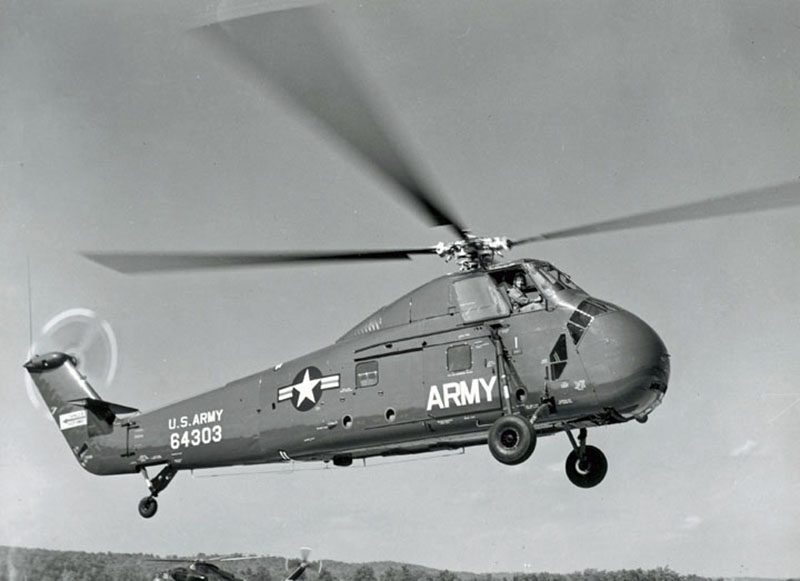
Commercial S-58
The commercial version of the S-58 was FAA Certified on August 2, 1956. Chicago Helicopter Airways, New York Airways, Los Angeles Airways, and Sabena Airlines used a 12-passenger configuration for scheduled passenger service. It was also utilized by the petroleum and construction industries.
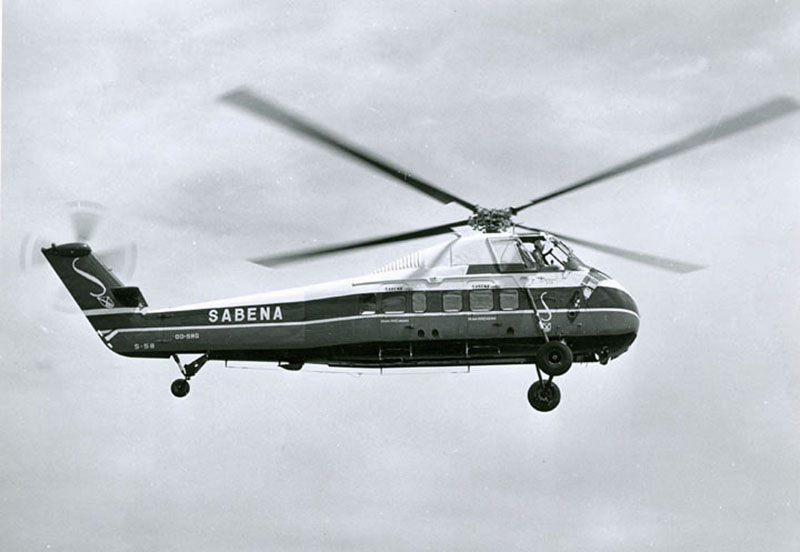
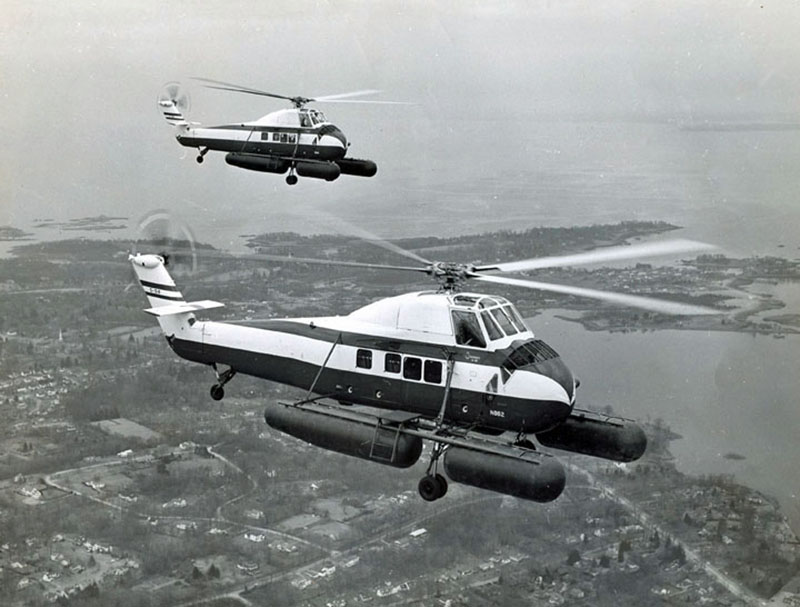
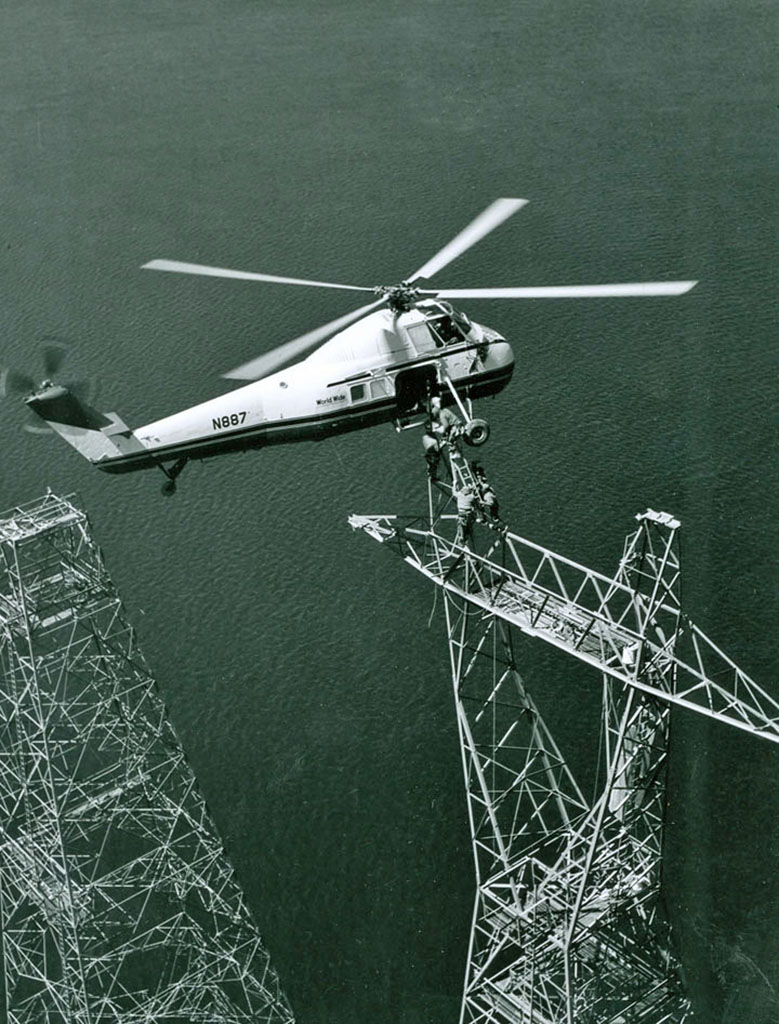
General Characteristics and Performance
Performance Standard Day at Sea Level | UH-34D Seahorse | SH-34J Seabat |
|---|---|---|
Maximum Speed (Vne) | 106 kts / 122 mph / 196 km/h | 105 kts / 121 mph / 194 km/h |
Cruise Speed | 84 kts / 97 mph / 156 km/h | 84 kts / 97 mph / 156 km/h |
Range | 215 mi / 346 km
| 255 mi / 410 km
|
Service Ceiling | 9,500 ft / 2,896 m
| 9,500 ft / 2,896 m
|
Rate of Climb | 1,100 feet/min / 335 m/min
| 1,100 feet/min / 335 m/min
|
Weights | UH-34D Seahorse | SH-34J Seabat |
|---|---|---|
Maximum Takeoff Gross Weight | 14,000 lbs / 6350 kg | 14,000 lbs / 6350 kg |
Weight Empty | 7,900 lbs / 3,583 kg | 8,275 lbs / 3,753 kg |
Useful Load | 6,100 lbs / 2,967 kg
| 5,725 lbs / 2,597 kg
|
General Data | |
|---|---|
Crew Seating Capacity | 2 |
Powerplant Ratings Standard Day at Sea Level | |
|---|---|
Wright R-1820-84 | 1,525 hp / 1,137 kW
|
Aircraft Dimensions | |
|---|---|
Main Rotor Diameter (Blade Tip Circle) | 56′ 0″ / 17.07 m
|
Fuselage Length | 46’ 9″ / 14.25 m
|
Height Overall | 15’ 11” / 4.85 m
|
Disc Area | 2,463 ft² / 228.85 m²
|
Production History
Military
The first flight of the S-58 was on March 8, 1954. Four prototype helicopters (XHSS-1) were built for testing. The first production SH-34G (HSS-1) flew on September 20, 1954. The SH-34G entered Navy service in August 1955. The first Army model CH-34A (H-34A) unit was operational in September 1955. The Marine model UH-34 D (HUS-1), a utility version of the S-58, entered service in February 1957
Foreign Military Sales
S-58 helicopters were provided to over 23 foreign countries through various military assistance programs and direct sales. S-58 helicopter were operated in various configuration by, Argentina, Australia (Westland), Bangladesh (Westland), Belgium (Sud), Brazil, Brunei (Westland), Cambodia, Canada, Chile, Ghana (Westland), Great Britain (Westland), Germany, France (Sud), Israel, Indonesia, Italy, Japan, The Netherlands, South Vietnam, Thailand, USSR (Russia), and Uruguay.
Commercial
The Commercial Model of the S-58 received FAA Certification for Airline Service in August 1956. Chicago Helicopter Airways, New York Airways, Los Angeles Airways, and Sabena Airlines operated a 12-passenger configuration. Commercial S-58 helicopters were also used in utility roles hauling external cargo the heavy load placement at construction sites.
When production at Sikorsky ended in January 1970 a total of approximately 1,800 S-58s of all version were manufactured. Close to 600 additional helicopters were manufactured under license in England, France, and Italy.
Twin turbine engine S-58T
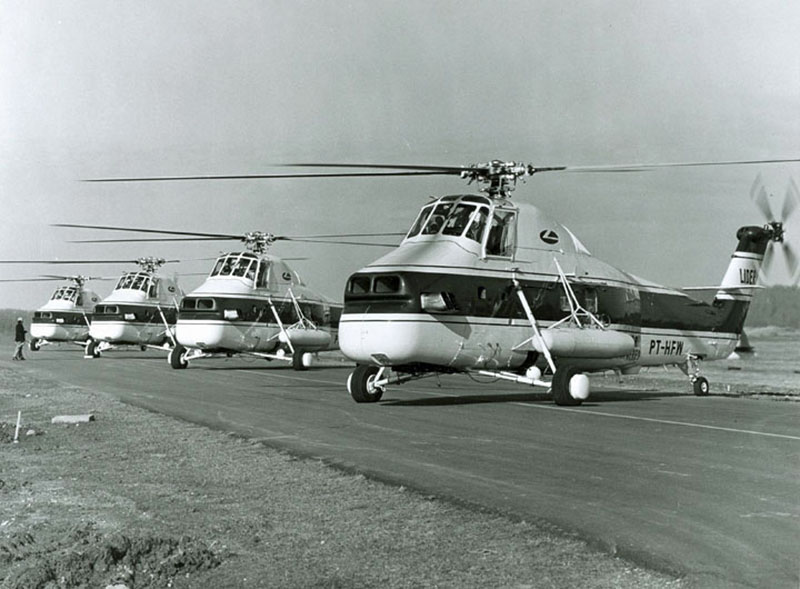
In 1970, Sikorsky set up a production line to remanufacture S-58 aircraft to the S-58T configuration which included replacing the R-1820-84 Radial engine with a Pratt & Whitney Canada PT-6-3 Twin-Pac® Turbine engine. FAA approval for the modifications was received in April 1971. Sikorsky also produced kits which allowed S-58 helicopter operators to convert their helicopters to the S-58T Configuration. The addition of the Pratt & Whitney Canada PT-6 Twin-Pac® Turbine engines provided the reliability of turbine power, twin engine safety, and increased lifting capability at higher temperatures and altitudes. The R-1820 engine of the S-58 provided maximum power up to 700 feet. The PT-6-3 Twin-Pac® provided the same power up to 6,000 feet. The turbine powered S-58T in forward flight with one engine inoperative was able to continue flight at maximum gross weight up to an altitude of 5,000 feet
An improved version the S-58T, the S-58T Mark II, added a more powerful engine which improved one engine inoperative capabilities and installed a bifilar vibration absorber which reduced rotor induced vibration. The bifilar provided improved pilot and passenger comfort and reduced aircraft maintenance. The Type Certificate, manufacturing rights, and support for the S-58/S-58T were sold to California Helicopter International in 1981.
Related Models
Sud Aviation
Sud Aviation in France was licensed to manufacture S-58 helicopters. The first 96 helicopters were assembled from parts provided from Sikorsky. Sud Aviation then built an additional 166 helicopters for the French and Belgium Navy’s (HSS-1) and the French Air Force (HUS-1).
Westland Helicopters
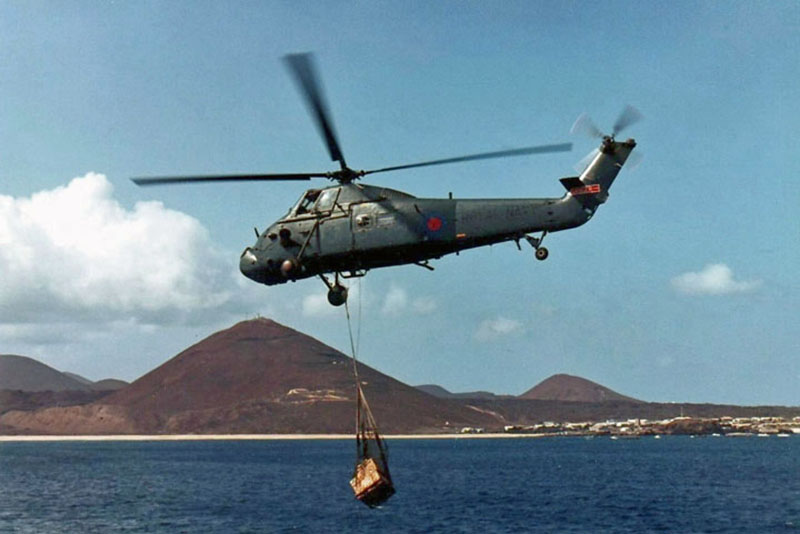
Westland Helicopters in the United Kingdom was licensed to build the S-58 helicopter. Westland elected to develop and build a turbine-powered helicopter on the S-58 airframe; The first Westland Wessex HAS.1 for the Royal Navy first flew on June 20, 1958. It was powered by a 1,450 hp Napier Gazelle turbo shaft engine. They entered Royal Navy service for ASW duties in 1961. In 1966 Westland rebuilt the Wessex HAS.1 models with 1,600 hp Napier Gazelle turboshaft engines, improved SONAR, and added RADAR with a Radome on the tail cone. They were redesignated as Wessex HAS.3 helicopters and entered service in 1967.
A utility model HC.2 was produced for the Royal Air Force and the Royal Marines. The HC series (HC.2, HCC.4 and HU.5) were powered by twin Rolls-Royce Gnome engines. The Rolls Royce Gnome engine is a cousin to the General Electric T-58 engine and was built by Rolls Royce under a license from GE. The Wessex entered service with the RAF in 1962 and remained in service until January 2003. A Wessex HCC.4 provided transportation for the Royal Family from 1969 to 1998. The Royal Marine commandos used Royal Navy Wessex HU.5 helicopters for transportation. Westland built a total of 356 Wessex helicopters.
- by Vinny Devine
Related Articles
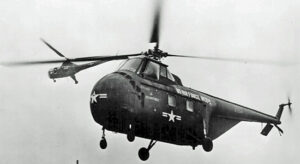
Sikorsky Grows the Helicopter – the S-55
The Sikorsky S-55 gave the U.S. armed services a much larger and more capable helicopter than the S-51, and ensured Sikorsky Aircraft leadership in vertical flight.
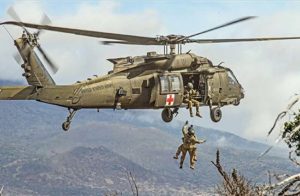
Sikorsky Lifts the Army
The U.S. Army saw the possibilities of the helicopter early in its development, thus beginning a relationship with Sikorsky Aircraft that continues to this day.
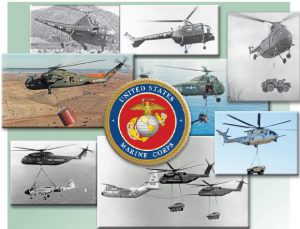
Sikorsky Builds Marine Corps Heavy Lift
The evolution of the Marine Corps’ CH-53K King Stallion heavy lift helicopter beginning with the Sikorsky S-56 in 1953.
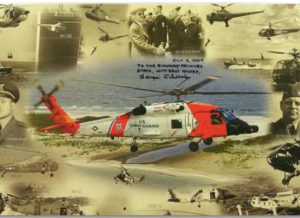
Sikorsky Serves the Coast Guard
A flight demonstration of Igor Sikorsky’s VS-300A helicopter at Bridgeport, Connecticut in April 1942 started an air-sea rescue revolution in the U.S. Coast Guard.
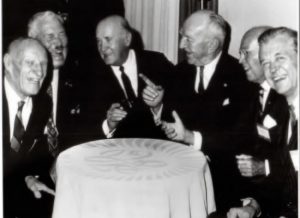
Predictions of a Pioneer
Igor Sikorsky’s predictions for air travel in general and for helicopters in particular have been largely realized or surpassed.
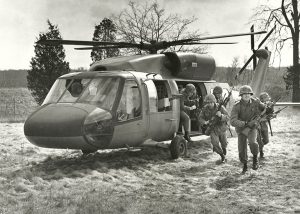
Ray Leoni: Recollections of a Sikorsky Junior Engineer
Ray Leoni recollects his 41-year career at Sikorsky Aircraft, beginning as a junior engineer and retiring as a Senior VP of Engineering and Advanced Programs.
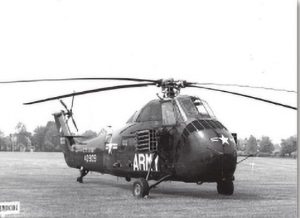
Evolution of the Armed Helicopter
Military users quickly understood the flexibility and fire-power of rotary wing platforms and ultimately evolved highly integrated weapons systems ready to protect themselves and others.

Sikorsky Helicopters in U.S. Air Force Rescue Squadrons
The HH-60W Combat Rescue Helicopter is the latest in the life-saving line of Sikorsky helicopters made for U.S. Air Force Rescue Squadrons. The Whiskey will round out a century of vertical flight rescue heroism.
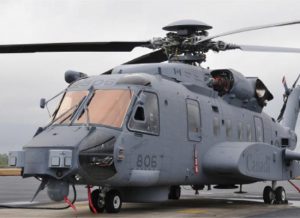
Sikorsky’s Sub Hunters
Today’s MH-60R gives the U.S. Navy the world’s most advanced ASW helicopter. However, the potential of the helicopter in ASW was recognized even before the Navy and Coast Guard flew their first Sikorsky R-4s in World War II.
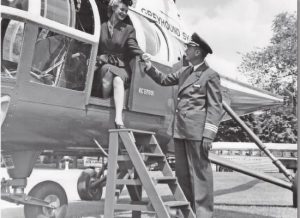
Sikorsky Helicopters in Airline Service
Early in the evolution of Sikorsky helicopters, Igor Sikorsky and his team envisioned scheduled passenger flights serving major cities.
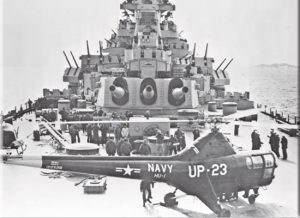
Sikorsky Helicopters Came of Age in the Korean War
Prior to the Korean War, the U.S. armed forces had few helicopters and little combat helicopter doctrine. The Korean conflict drove rapid combat helicopter development.
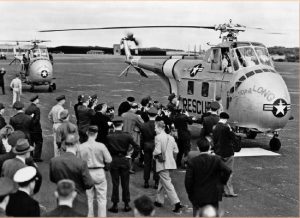
Sikorsky Aircraft Cross the Atlantic
This issue of the newsletter recognizes the anniversaries of a VS-44A flying boat setting a record for crossing the Atlantic non-stop; S-55 helicopters self-deploying to Europe; and S-61 helicopters flying non-stop to Paris.

